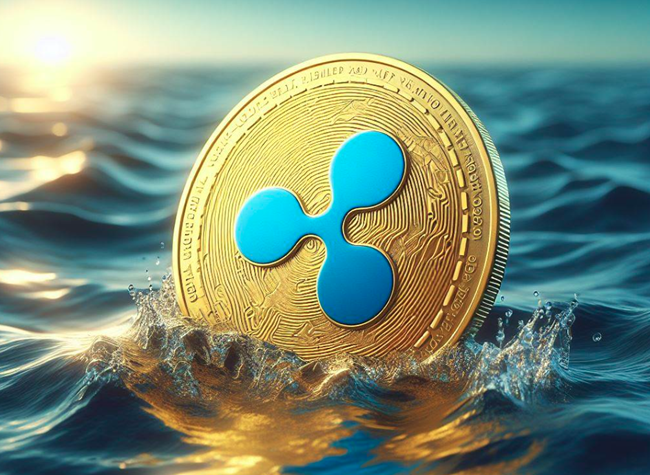Unlike Bitcoin and Ethereum which utilize energy-intensive proof-of-work mining, the XRP Ledger uses a consensus protocol called Federated Byzantine Agreement (FBA) which enables fast transactions with little energy expenditure.
The XRP token was created by Ripple and a founders reward of 100 billion XRP was distributed at inception. However, the XRP Ledger is decentralized meaning anyone can build applications on it. The main utility of XRP provided by Ripple is as a settlement layer and bridge currency between different fiat currencies and digital assets. Its speed and low transaction fees make it well-suited for global payments.
Background on Ripple Company
Ripple is a payments company that was founded in 2011 under the name RipplePay by Jed McCaleb and Chris Larsen. In 2012 it was rebranded as OpenCoin and then eventually Ripple Labs in 2013. The company built infrastructure utilizing blockchain technology to enable real-time gross settlement and remittance of global payments.
A key component of this infrastructure is RippleNet which is Ripple's global payments network. Various banks and financial institutions use RippleNet to conduct international transactions cheaply and efficiently. The native token that facilitates many of these payments and currency swaps on RippleNet is XRP.
Properties and Roles of XRP
XRP serves multiple roles within the Ripple ecosystem:
- Settlement Layer: The primary utility of XRP is as a "bridge currency" that financial institutions can use to settle cross-border payments faster and more cheaply than traditional banking rails
- Speed: XRP consistently handles over 1500 transactions per second, settling in 3-5 seconds, making it one of the fastest major digital assets
- Low Fees: XRP transaction fees are de minimus, usually less than a penny, keeping costs negligible for transfers
- Deflationary Supply: The current circulating supply is over 48 billion XRP, with modest ongoing inflation, but the total supply has deflationary burns
XRP's Role in Ripple Payment Flows
One example of how XRP facilitates transactions on RippleNet is through its On-Demand Liquidity (ODL) service which leverages XRP as a bridge between currencies. The steps are:
- Bank 1 initiates a payment in Currency A to Bank 2 and owes Currency B
- Ripple software immediately purchases XRP on the open market with Currency A
- XRP is instantly transferred cross-border to Bank 2 via the XRP Ledger
- Bank 2 now owns XRP which is instantly sold for Currency B
- Bank 2 receives Currency B payment from Bank 1
This allows faster settlement and flexibility with currency pairs. The XRP token powers the underlying transfer of value.
Reasons for Strong XRP-Ripple Ties
Though touted as "decentralized", there remain close ties between XRP and Ripple which have drawn criticism:
- Ripple the company owns over 50% of the total XRP supply
- Ripple sells programmed amounts of XRP to fund company operations
- The large XRP holdings give Ripple significant control over the token's price
- Ripple works closely with exchanges and market makers to boost XRP, blurring decentralization
So while technically independent, XRP's success remains deeply intertwined with Ripple, for better or worse.
Price History and Performance
After launch in 2013, XRP stayed under $0.01 until 2017 when crypto speculation took hold broadly across digital assets. XRP surged to an all-time high of $3.84 in January 2018 fueled by retail hype over Ripple partnerships. However the 2018-2020 bear market was punishing, taking XRP below $0.20. More recently in 2021, XRP doubled from under $0.50 to over $1 though it has slid the past year. It maintains a top 10 market capitalization near $20 billion.
Legal Controversies and SEC Lawsuit
In late 2020, Ripple was sued by the SEC alleging they raised over $1.3 billion by selling XRP to retail investors in an unregistered ICO. This has massive implications for XRP potentially being considered an unlicensed security rather than a commodity. The drawn-out lawsuit remains ongoing, but if Ripple ultimately loses, they could face heavy fines, be ordered to repay ICO participants, and XRP may have much dimmer utility outlooks depending on regulatory restrictions placed on the token.
Future Outlook for XRP
The future functionality and adoption prospects for XRP largely depend on the outcome of Ripple's SEC lawsuit. If deemed a security by the court, XRP would face harsh restrictions on trading and usage within the U.S. financial system. However, if eventually ruled a commodity, Ripple could continue aggressively marketing it as a settlement token to facilitate faster fund flows for many fiat currency corridors using the On-Demand Liquidity model. With speed and scalability superior to Ethereum currently, carrying significant volumes is achievable on the XRP Ledger. The deciding factor remains the legal determination of what sort of asset XRP fundamentally constitutes.
Conclusion
In conclusion, while technically independent from the company Ripple, XRP's intended functionality has always been deeply intertwined with Ripple's global payments network infrastructure and adoption strategy. The two entities have essentially grown together, supported by the large XRP treasury holdings funding company operations. However, the ongoing lawsuit by the SEC has raised questions on the true nature and legal standing of XRP as an asset. Its eventual determination whether deemed a security or commodity will play a significant role for both the future of Ripple and the XRP cryptocurrency which serves as the native token for all activity on the speedy XRP Ledger.

